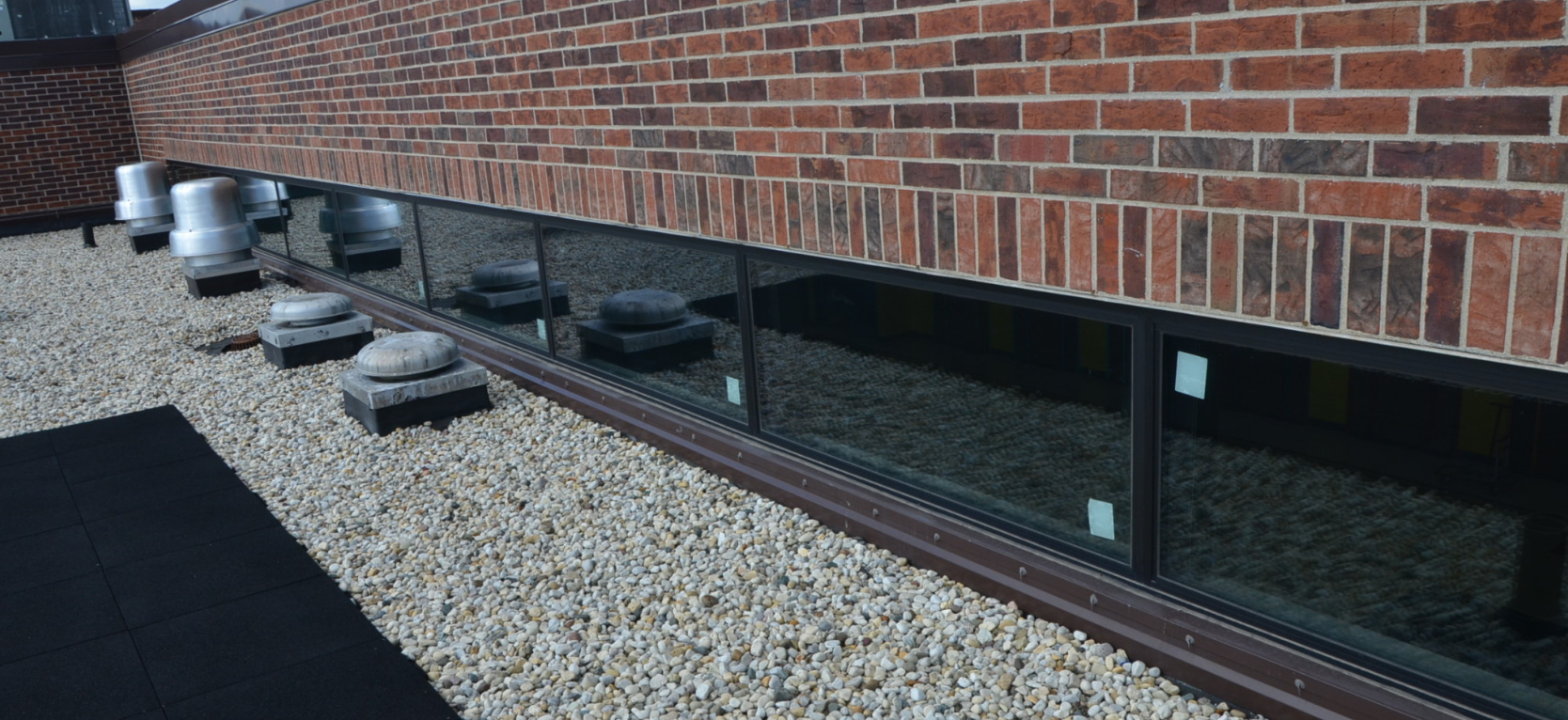E. THE DETAILING OF WALL AIR BARRIERS TO ROOF VAPOR OR AIR BARRIERS IS NOT SHOWN AND CERTAINLY NO DEFINITION OF RESPONSIBILITY PRESCRIBED AS TO WHO IS TO TIE THESE MATERIALS TOGETHER.
Recent code and standard updates have made a real mess of the building envelope, but it is the designer who is obligated to make it work—not the contractor. One should be able to use a pencil and trace a line over the wall air barrier to the roof air/vapor barrier without lifting the pencil. This requires good design and detailing at the roof edge. Consider what trade will arrive first and how the two materials and contractors need to work together. Define what type of interrelationship is to take place, who is to do what and then specify this coordination.
F. UNDERSTANDING OF MATERIAL LIMITATIONS IS NON-EXISTENT.
I know you crave that LEED point like an addict craves crack, but I am telling you that water-based adhesives do not work in areas of the country with cold winters. Cold temperatures turn membranes brittle and stiff, and water-based adhesives do not work or require extensive periods to flash off. As fall emerges, dew formation on roof decks, membrane and adhesive is a challenge to deal with. Winter applications on buildings under construction allow construction-generated moisture to pass into and deteriorate the roofing.
For example, in the Midwest and northern climates, I recommend 10-mil polyethylene be placed over non-monolithic roof decks—even if not required— for the performance of the roof system after occupancy to protect the roof system from the deleterious effects of construction-generated moisture drive. (See Roofing’s September/October 2014 issue, page 52.)
Ultimately, the designer should make an effort to understand when the roof will be installed and design a roof system to work at that time of year.
G. ROOF EDGES AND HOW THEY TERMINATE AT HIGH WALLS IS NEVER DETAILED.
The roof edge(s’) conditions should be designed, detailed and explicitly noted, specifically for the project at hand and be secured to the structural components of the roof system. (See Roofing’s March/April 2016 issue, page 42.) Most architects never consider how that roof edge terminates, whether at masonry walls; glazing; other roof types, such as sloped systems; and expansion joints. For more experienced architects this is a great opportunity to use those isometric and axonometric sketching and drafting skills you learned so long ago. You younglings think about how a detail terminates, build little models out of lightweight Strathmore or try and draft it in three dimensions.
Knowing how a condition terminates is important, functionally and aesthetically. Once you see a counterflashing on a masonry wall terminated several feet above a roof edge at your building’s front entry you will know why. You will want to know, too, that the transition of the roof edge to a termination point works; it’s interesting when, during construction, two elements are poorly juxtaposed.
H. ROOF DRAINS AND CURBS ARE IMPROPERLY OR NOT DETAILED.
If a roof system is properly designed, water will flow to the roof drain. If not properly detailed, bad things happen.
- 1. Water will pour into the building.
- 2. Water will drip and pass into the interior and be a constant source of frustration.
- 3. And/or water will pond around the roof, driving your client crazy.
I have seen way too many drains that do all three. With the new the International Energy Conservation Code requiring in Chicago more than 5 inches of thermal insulation, getting the drain detailing correct the first time is paramount. Designing the roof drain and detailing it correctly with the required interfacing with plumbing and structural engineers is covered in my article in Roofing’s May/June 2016 issue, page 40.
Roof curbs are another item of frustration in the field for roofing contractors. Whether too short, fabricated with a cant for bituminous systems, or irresponsibly placed in valleys or near drains, the roof curb and/or penetration is another impinging element on the roof that needs to be designed and detailed. You will need to first define the maximum insulation height. Once that is done at 12 inches (which allows for good base flashing height, pavers or other protective pads, counterflashing and/or a skirt flashing, as well as the potential for additional insulation when reroofing in the future), you will have your minimum curb height. Once this height is known, you need to inform the mechanical engineer of the height and that you require fully clad exterior side curbs. Tell him or her you will need to review the location of the curb to verify that the curb will not impede water flow.
I. SPECIFICATIONS ARE INADEQUATE—OFTEN BOILERPLATE GENERIC—AND DO NOT MATCH THE DRAWINGS. I’VE ALSO SEEN NON-SPECIFIC DETAILS THAT ARE NOT TO SCALE OR DO NOT REFLECT ACTUAL CONDITIONS.
Do you know what the perception is when a roofing contractor looks at a set of contract documents and sees the specification calls for a TPO roof membrane and then the details call for modified but the drawings reflect a third membrane type?
Ensure the specification writer is informed of the designed roof systems and all details match the designed system. I suggest that prior to drafting details you prepare a section detail through the roof so everyone on the team has the same correct information.
J. ARCHITECTS OR CONSULTANTS SOMETIMES HAVE MULTIPLE DESIGNS LISTED IN THE SPECIFICATION, LEAVING IT TO THE CONTRACTOR TO ISSUE RFIs THAT, MORE OFTEN THAN NOT, ARE NOT ANSWERED.
It is almost commonplace and errantly so that a specification will list several different roofing types leaving the intent unclear; this is an in-house master spec issue, I suspect. As noted above, ensure the specification writer is clear about the system design choice and eliminates all references to non-designed elements. And please give contractors the courtesy of a timely response to an RFI; I suggest you respond within 24 hours.
Illustrations: courtesy of Hutchinson Design Group Ltd.




Well said and written Tom. I would like to meet sometime when I come to Chicago. I will be there in April if you have the time.
Christopher Gentile RRO
586-855-0687